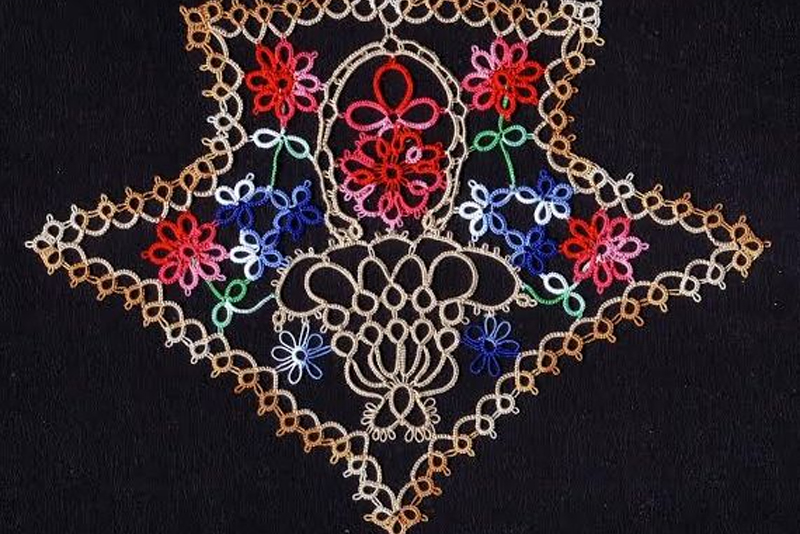Let's begin this new year by resolving to tat the "Right" way! But...just what exactly is the RIGHT way to tat? A recent discussion on the International Org. of Lace Ning Tatting Forum (http://laceioli.ning.com/group/tatting) recounted a sad experience where a tatter was informed her method was WRONG. No method that produces lace can be wrong.
There are many methods of tatting. First, the tatter must realize that there is no one way that is right for all tatters. Second, each tatter needs to try out the various styles and find which is best for them. Remember that a shuttle, needle, or spool is just a convenient way to have extra thread at hand for tatting. None of them are essential in order to actually tat.
1. Finger tatting is the method to try first. Finger tatting requires only thread and hand(s.) The tail end of the thread is held while the normal over/unders are worked.
2. The two-bladed post or bobbin shuttle may be used alone, attached to a ball, or wound together with second shuttle. I prefer the slip and slide method where I do not let go of the shuttle. (If you are interested in seeing how I tat, please view the video preview on this page: http://craftdaily.com/p-1584-shuttle-tatting-the-basics-and-more-with-georgia-seitz-part-1.aspx)
3. The use of the flat shuttle, however, means a slight change in hand position for working. The second half stitch is worked as normal. The first half stitch, though, works better if the thread is laid over the left hand instead of the right as is traditional. (The change in method was once called the "Modern Priscilla" method.
4. Needle tatting as illustrated by Ms. Rozelle 1917. The double stitches had the thread wrapped onto the needle. To form a ring, the needle was pushed through a previous stitch closing the ring much in the manner of the self-closing mock ring today.
5. The modern needle tatting method. Here the needle can be used just with a cut thread or attached to a ball for larger pieces. The thread is wrapped onto the shank of the needle and slides off onto a carrying cord or foundation cord.
6. The Jiffy Needle Tatting (JNT) style also wraps the double stitches onto the needle before sliding them off into rings or chains. However, JNT uses a separate double carrying cord to hold the double stitches.
7. Japanese Needle Tatting uses a needle with a hook at both ends onto which the ds are wrapped.
8. Cro-Tatting uses a bullion hook onto which to wrap the double stitches. The chains between rings are often crocheted in this method.
Be sure to review "The Complete Book of Tatting" by Rebecca Jones. For nearly three decades this book has been the standard reference text for tatters. Containing explanations for six different methods of tatting, all the basic stitches plus advanced techniques such as cluny tatting, pearl or maltese tatting and the roll stitch. It has a wealth of information and patterns to keep the new tatter busy and to inspire experienced tatters, too.

Here's the latest article from the Tatting site at BellaOnline.com.
Miss Beller's Van Dyke Edging 1916
Miss Beller's Van Dyke Edging 1916, The Plain Dealer, is a vintage piece of simple tatting but whose construction requires planning.
http://www.bellaonline.com/articles/art300526.asp
Please visit tatting.bellaonline.com for even more great content about Tatting.
To participate in free, fun online discussions, this site has a community forum all about Tatting located here -
http://forums.bellaonline.com/ubbthreads.php?ubb=postlist&Board=39
I hope to hear from you sometime soon, either in the forum or in response to this email message. I thrive on your feedback!
Have fun passing this message along to family and friends, because we all love free knowledge!
Georgia Seitz, Tatting Editor
http://tatting.bellaonline.com
One of hundreds of sites at BellaOnline.com







